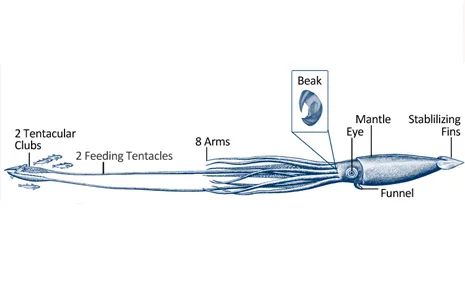Giant Squid Anatomy

Like octopods and cuttlefishes, giant squid have eight arms. But they use their two much longer feeding tentacles to seize prey. The tentacles have powerful suckers at the ends. More about the giant squid can be found in our Giant Squid featured story.

